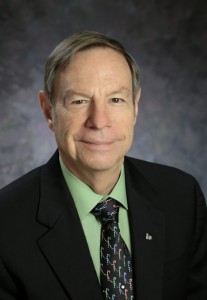Penetration Dynamics
**********
*WEATHER NOTICE *
If you have been watching the forecasts for the Baltimore area you have seen that there is potential for a snow storm on Tuesday. This may cause some disruptions in the schedule for the Penetration Dynamics course tomorrow so we wanted to give you some notice of how we will proceed if this occurs.
If the University is closed on Tuesday: We will not hold the course on Tuesday. We will go forward with a shortened version of the course on Wednesday.
If the University has a delayed opening: We will follow the University’s delay schedule. For example: if the opening is for 10 AM, the course will begin at 10 AM.
The office will send out an email with notice of any closures or delays when the University makes a decision. This is usually before 6:30 AM. You can also check the status on the weather on JHU’s Weather Emergency webpage here http://esgwebproxy.johnshopkins.edu/notice/ or by calling either of these phone numbers 410-516-7781 or 1-800-548-9004.
**********
When: February 17-18, 2015
Instructor: Dr. Charles E. Anderson, Jr., Director, Engineering Dynamics Department, Mechanical Engineering Division, Southwest Research Institute
Location: Malone Hall, room G 33-35, Johns Hopkins University, Homewood Campus, Baltimore, MD
About the course:
This two-day short course will focus on the penetration response of metallic and brittle materials. The first day will focus on the penetration response of metals and the second day will focus on the penetration response of brittle materials such as ceramics and glass.
Topics on the first day include similitude modeling; semi-infinite penetration; perforation; ballistic limit analysis; analytical modeling (hydrodynamic theory, Tate, and Walker-Anderson); deviations from hydrodynamic theory; rigid-body penetration; L/D effect; high-velocity effects; replica scale modeling; and impact inclination effects. Numerical simulations will be used to provide insights into the mechanics and physics of penetration.
Topics on the second day include failure waves; reverse ballistic experiments of gold rods into silicon carbide; penetration into intact, predamaged, and powder silicon carbide; penetration into glass by long rods, short rods, and spaced short rods; experimental methods for determining constitutive parameters for failed material (borosilicate glass and boron carbide), an analytical model for dwell; dwell and post-dwell penetration (silicon carbide and glass); ballistic experiments into transparent armor; and measurement of crack and damage velocities in glass. Again, numerical simulations will be used to provide insights into the mechanics and physics of penetration
About the instructor:

Charles E. Anderson, Jr. is Director of the Engineering Dynamics Department of SwRI, where he oversees and manages a multi-disciplinary effort to investigate the dynamic response of materials and structures. He has been active for over 35 years in numerical simulation of explosive-metal interactions and impact mechanics, using numerical simulation for fundamental and applied studies. Dr. Anderson is recognized for his leadership in combining numerical simulations with experimental data to develop advanced models of the response of materials to shock, impact, and penetration. He is also recognized for his experience in developing relevant test plans to include appropriate and state-of-the-art diagnostic equipment. He has been the organizing chair and technical chair for a number of international conferences/symposia. Dr. Anderson continues to serve on Government advisory boards dealing with issues in computational mechanics, penetration mechanics, and the response of materials at high loading rates, areas in which he has published extensively. He is an Associate Editor for the International Journal of Impact Engineering, a Fellow of the American Physical Society and a Fellow of the International Ballistics Society. In 2000, Dr. Anderson received the Distinguished Scientist Award from the Hypervelocity Impact Society for his contributions to penetration mechanics, numerical simulations of penetration mechanics, and modeling dynamic material response. In September 2014, he was elected as Ballistics Science Fellow of the International Ballistics Society in recognition of his “outstanding research in terminal ballistics.”
Registration:
Continental breakfast, lunch, the informal social and course materials are included in the cost of registration.
Travel and Accommodations:
For those traveling by air, we recommend flying in to BWI Thurgood Marshall Airport in Baltimore.
Shuttle, taxi and rental car options are readily available at BWI for a reasonable price.
For those traveling by train, Baltimore’s Penn Station is a 10 minute drive from campus.
The Inn at the Colonnade is located within walking distance of Homewood Campus.
Cancellation Policy:
HEMI reserves the right to cancel a course up to 2 weeks before the scheduled presentation date. Please contact the HEMI office to confirm that the course is happening before making non-refundable travel arrangements.
Information for course attendees:
If you are traveling by car, visitor parking is available in the South Garage. If you are using a GPS system for directions, the best address to use in 3101 Wyman Park Drive. We will have parking vouchers available when you arrive.
Malone Hall is the newest building on campus and located in between Mason (1) and Hackerman (11) on the Johns Hopkins campus map click HERE to view.



